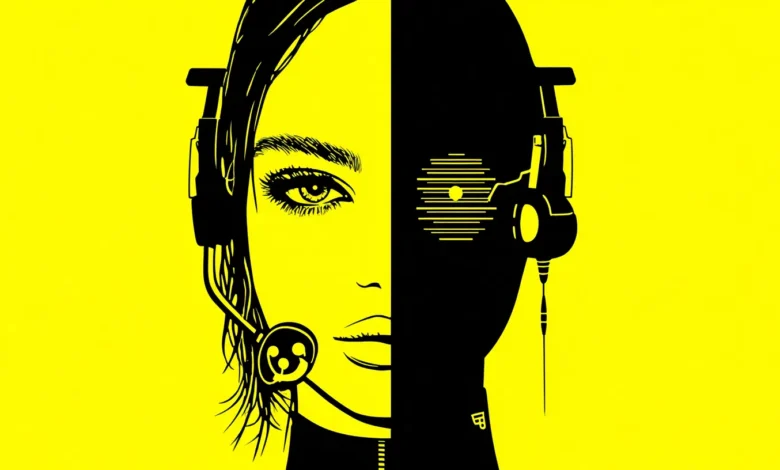
Customer service is entering a split future.
On one side are the AI Hawks, who see AI and automation as inevitable.
On the other are the AI Doves, who believe customers will always demand a human-first experience.
Which side wins?
That question hit me while attending a recent webinar about legislation aimed at preserving U.S.-based service jobs.
The discussion was slightly political, mostly economic, and mildly emotional. But as I listened, one thought kept circling back:
We’re chasing the wrong question.
The real issue isn’t where service happens—it’s who (or rather, what) delivers it.
The All-AI Call Center
Picture this: you call or chat with customer support, and AI powers every response.
No holding. No transfers. No fumbling through scripts.
Your account is pulled up before you finish typing. The system recognizes your tone, anticipates your frustration, and even predicts what you’ll ask next.
It feels flawless. Effortless. Almost magical.
And it’s not a sci-fi pitch. Some companies already handle millions of customer interactions each month entirely with AI. Others use AI to schedule meetings, answer FAQs, and support multiple languages—all without a single human.
But when your flight gets canceled, your card is locked for fraud, or you’re staring at a confusing hospital bill, you don’t want flawless.
You want a human.
That doesn’t mean humans should handle everything.
It means they should handle only what matters.
The Seductive Truth of Full Automation
Let’s be honest: AI isn’t the future of customer service—it’s the present.
- Always on: No breaks, no boundaries.
- Total recall: Every interaction, instantly accessible.
- Infinitely scalable: One agent—or one system—for a million customers.
- Flawless execution: No “let me check,” just answers.
If efficiency is the scoreboard, AI already won.
It’s faster, cheaper, and more scalable than any human team ever could be. And yet, when it matters most, people still want people.
That is not a weakness of AI. It’s the design.
The contradiction is the point: people want empathy in the rare, high-stakes moments.
For everything else, they want speed.
The AI Hawk View
“AI will own the routine. Humans will own the rare and the raw.”
Here is where I plant my flag.
In the not-too-distant future, the vast majority of customer service will be done by AI. Voice, chat, and back-office automation will dominate. The economics are too compelling, and the technology is advancing too quickly, for it to go any other way.
Let’s be blunt. Nobody needs a human being to reset a password, check a shipping status, or pull up a billing history. Pretending otherwise is nostalgia disguised as strategy.
Even when AI fails, the lesson is clear: companies that rushed to automate without proper planning faced backlash and customer dissatisfaction—not because AI doesn’t work, but because bad implementation does.
Humans will remain, but only as specialists for the rare, complex, and deeply emotional cases where empathy matters more than speed.
This is not replacement.
It is repositioning:
AI first. Human only when it truly matters.
The Dove View: Resistance Isn’t Always Regress
To be fair, AI Doves aren’t simply clinging to the past. They raise valid, often overlooked concerns.
- Trust is fragile. Customers can lose faith quickly if bots get it wrong—especially in healthcare, finance, or emotionally charged situations.
- AI bias is real. Systems trained on flawed data can reinforce inequities, automate unfairness, and make mistakes at scale.
- Job displacement isn’t theoretical. Every AI implementation threatens real livelihoods. That’s not nostalgia—it’s economics with consequences.
- The human connection drives loyalty. People return to companies that “get them.” It’s hard to feel seen by a script, no matter how predictive it is.
Some businesses embrace this fully, prioritizing long, human-centric support interactions to build trust and loyalty. For them, emotional connection is the business model.
But here’s the critical distinction: none of these concerns argue against AI. They argue for smarter implementation, clearer boundaries, and better governance.
The Hawk’s Playbook
Winning companies won’t balance AI and humans. They’ll double down on AI and redeploy humans where they are irreplaceable.
- Automate 80–90% of interactions: FAQs, tracking, personalization, billing.
- Protect human moments: Escalations, recovery, high-emotion failures.
- Offer choice strategically: Let customers pick AI or human—choice itself builds trust.
- Be transparent: If it’s a bot, say so. Credibility beats trickery.
- Train empathy as a core skill: Tech can’t care. People can.
This isn’t about balance. It’s about division of labor: machines for scale, humans for connection.
The Twist: Humanity Becomes the Differentiator
“If bots are the default, then empathy is the last true edge.”
Anyone can license the same AI stack. Not everyone can build a culture where customers feel genuinely understood.
As automation levels the field, humanity becomes the differentiator. Efficiency will no longer separate winners from losers. Empathy will.
And if you’re worried about ethics, fairness, or job loss—you should be. But let’s stop pretending that doing nothing is the moral choice.
AI isn’t erasing people. It’s freeing them to do what machines can’t: feel, relate, recover trust.
Final Word
AI is no longer about if—it’s about how fast.
Hawks who adopt it will slash costs, scale seamlessly, and redeploy humans where empathy earns loyalty.
Doves who resist will pay more for less, frustrate customers, and fall behind.
But here’s the deeper truth: AI won’t just change how service works. It will change what service is.
Customer service used to be about fixing problems.
Now it’s about designing trust at scale.
AI will handle the friction.
Humans will create the feeling.
And the companies that win will be the ones that don’t just resolve issues—but restore belief.





